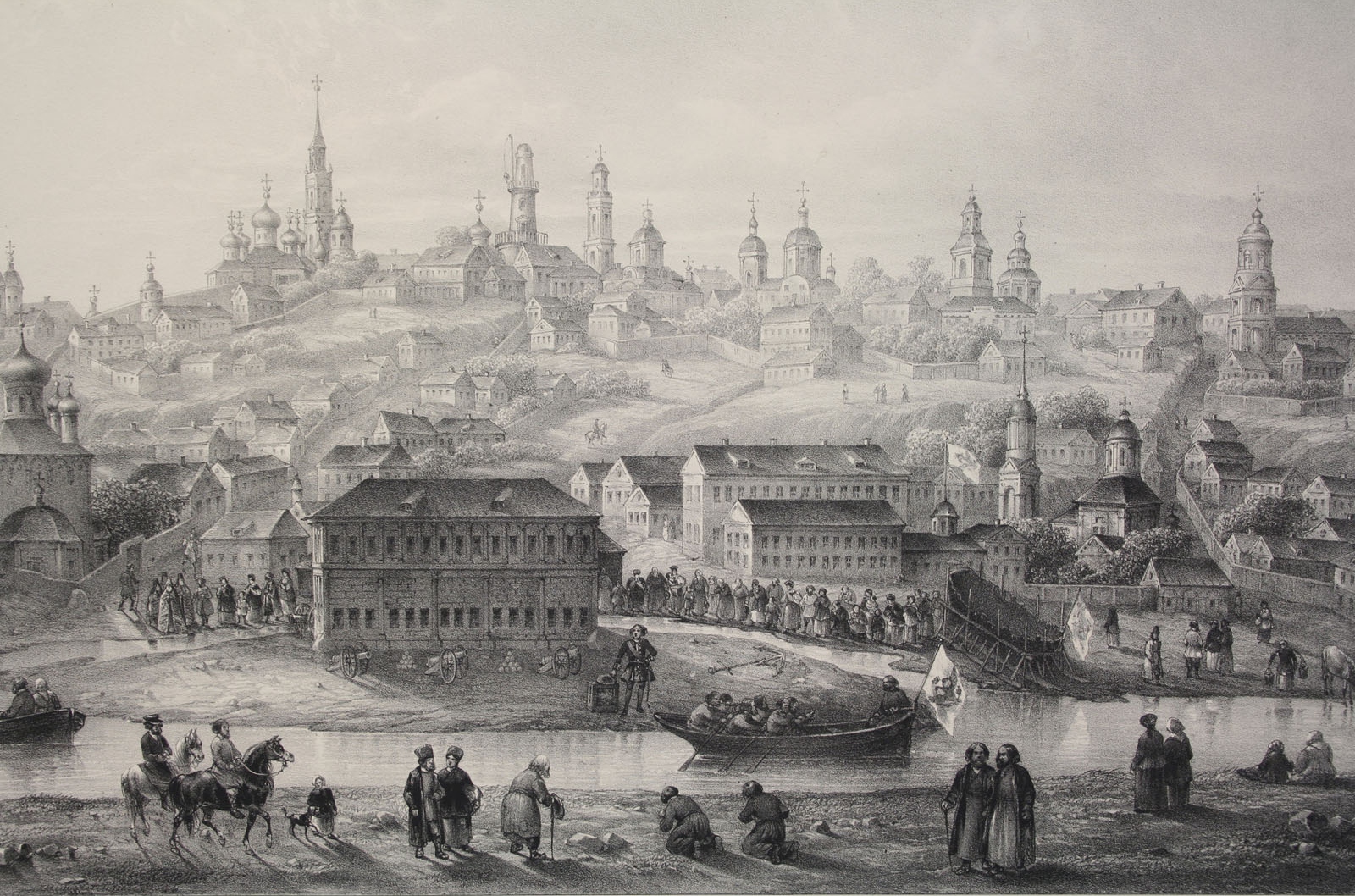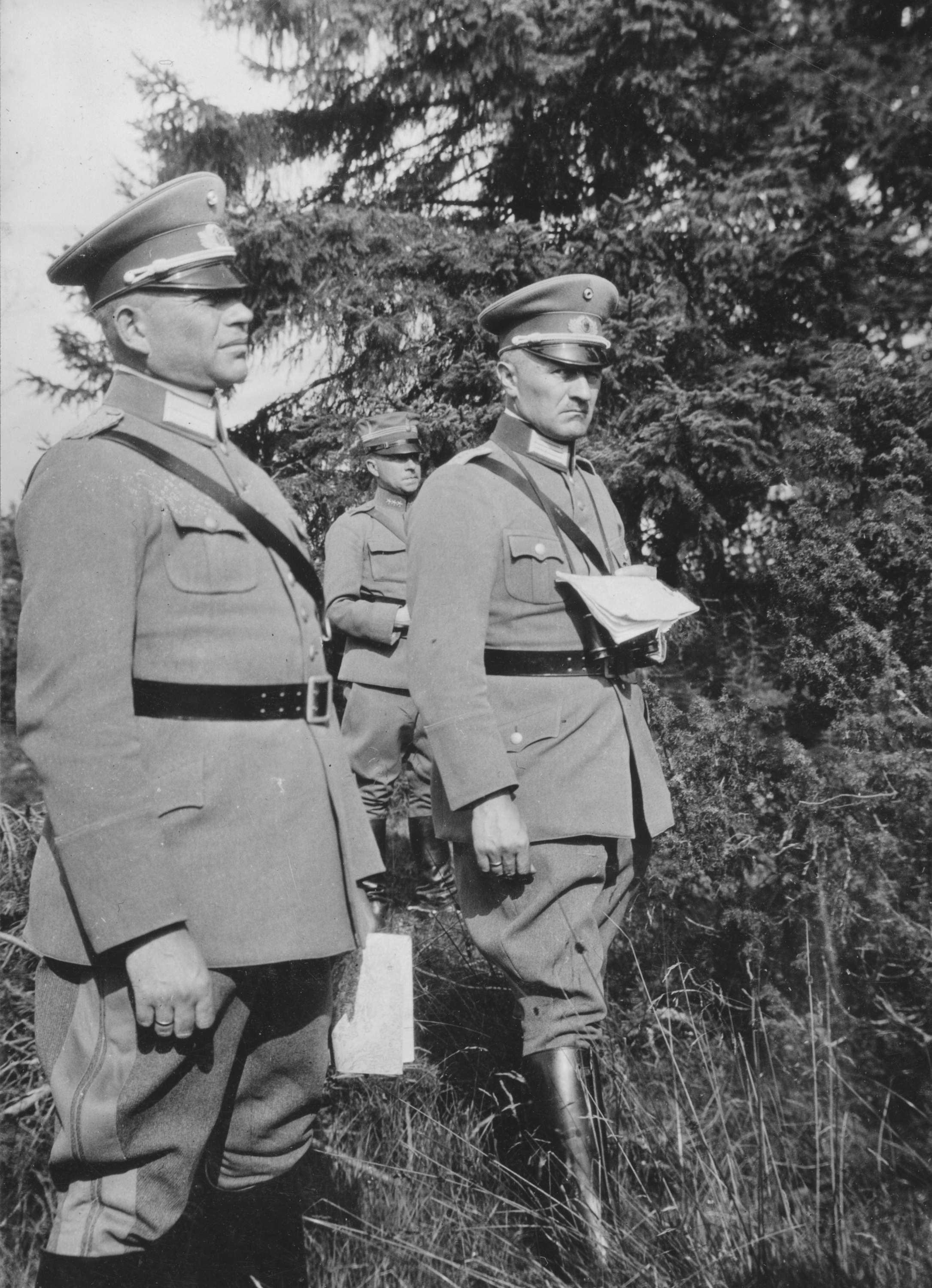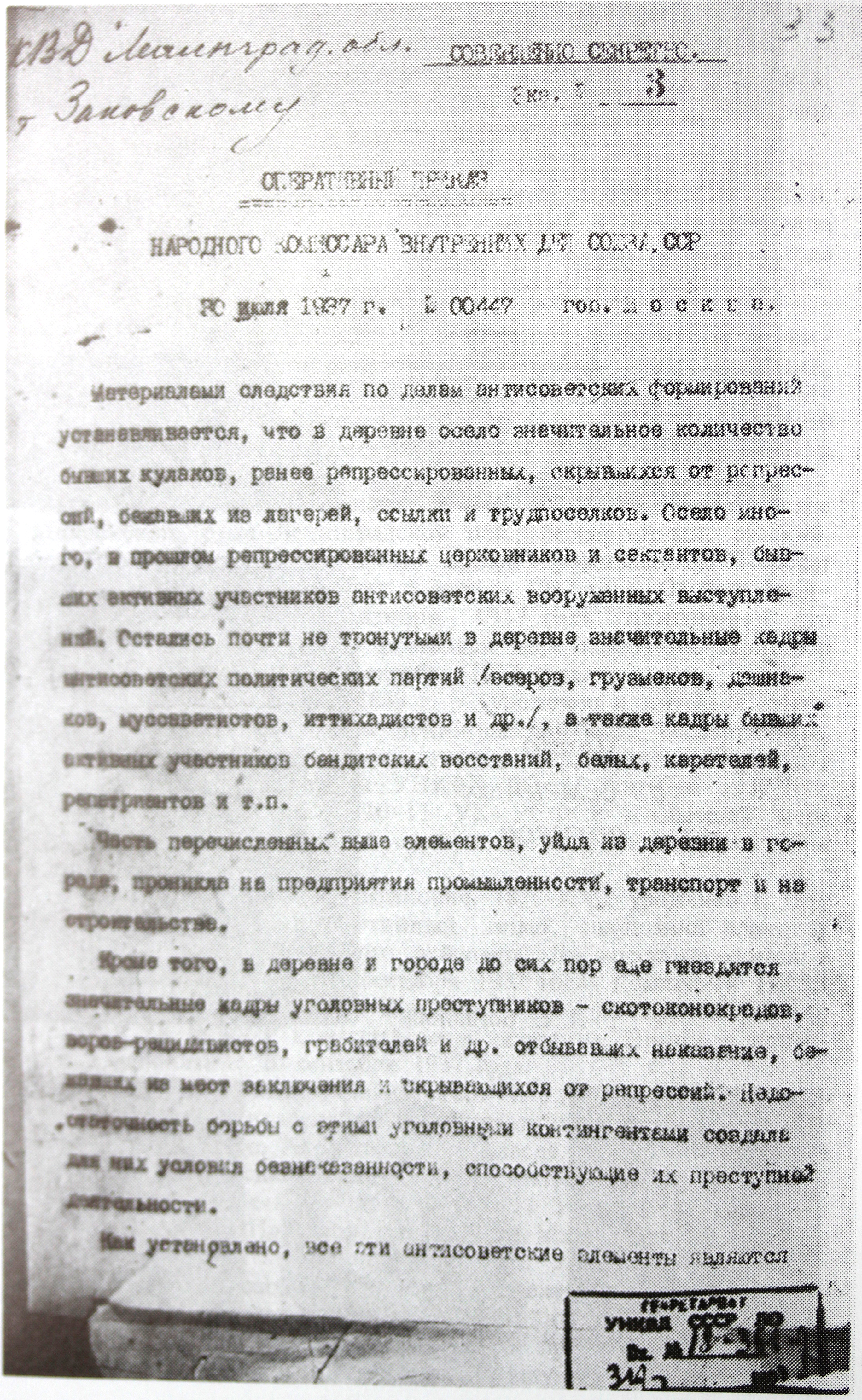|
Yakov Kreizer
Yakov Grigorevich Kreizer (; 4 November 1905, Voronezh – 29 November 1969, Moscow) was a Soviet field commander. Before the war Kreizer's Jewish parents were granted permission to live outside the Jewish pale of settlement because his grandfather was a cantonist soldier in the Russian imperial army. Kreizer enlisted in the Red Army in 1921, volunteered to the school for infantry officers in Voronezh (1923) and rose to Colonel and commander of 172nd Rifle Division (1939–1940). His rapid promotion, like that of other senior Soviet officers of his generation, was made possible because Stalin's great purge had decimated the Red Army officers of the Civil War generation. During these years Kreizer continued his military education: in 1931 he graduated from the Higher Officer Training School "Vystrel" and in 1941 from the elite Frunze Military Academy. In March 1941 Kreizer was appointed commander of 1st Moscow Motorized Rifle Division. Battles in Belorussia At the star ... [...More Info...] [...Related Items...] OR: [Wikipedia] [Google] [Baidu] |
Voronezh
Voronezh ( ; , ) is a city and the administrative centre of Voronezh Oblast in southwestern Russia straddling the Voronezh River, located from where it flows into the Don River. The city sits on the Southeastern Railway, which connects western Russia with the Urals and Siberia, the Caucasus and Ukraine, and the M4 highway (Moscow–Voronezh– Rostov-on-Don– Novorossiysk). In recent years the city has experienced rapid population growth, rising in 2021 to 1,057,681, up from 889,680 recorded in the 2010 Census, making it the 14th-most populous city in the country. History Foundation and name The first chronicle references to the word "Voronezh" are dated 1177, when the Ryazan prince Yaropolk, having lost the battle, fled "to Voronozh" and there was moving "from town to town". Modern data of archeology and history interpret Voronezh as a geographical region, which included the Voronezh river (tributary of the Don) and a number of settlements. In the lower rea ... [...More Info...] [...Related Items...] OR: [Wikipedia] [Google] [Baidu] |
Far East Military District
The Far Eastern Military District () was a military district of the Armed Forces of the Russian Federation. In 2010 it was merged with the Pacific Fleet and part of the Siberian Military District to form the new Eastern Military District. History The Far Eastern Military District traces its history originally to the Eastern Siberian Military District originally formed in 1918, during the Russian Civil War. Its headquarters were at Khabarovsk. Following the Soviet victory in the Civil War the Soviet forces in the area became the Special Red Banner Far Eastern Army (OKDVA) of the Far Eastern Republic. The District was first briefly formed in 1935 from those forces, but then reverted to the title Special Red Banner Far Eastern Army, under Marshal of the Soviet Union Vasily Blyukher, while still functioning as a military district. The Army became the Soviet Far East Front in June 1938, after Blyukher's torture and death at the hands of the NKVD during the Great Purge. In Augus ... [...More Info...] [...Related Items...] OR: [Wikipedia] [Google] [Baidu] |
Orsha
Orsha (; , ; ) is a city in Vitebsk Region, Belarus. It is situated on the fork of the Dnieper, Dnieper River and Arshytsa River, and it serves as the administrative center of Orsha District. As of 2025, it has a population of 101,662. History Orsha was first mentioned in 1067 as Rsha, making it one of the oldest towns in Belarus. The town was named after the river, which was originally also named Rsha, probably from a Baltic languages, Baltic root *''rus'' 'slowly flowing.' In 1320, Orsha became a part of the Grand Duchy of Lithuania. Between 1398–1407, the Orsha castle was built. On 8 September 1514 the famous Battle of Orsha occurred, between allied Grand Duchy of Lithuania with Kingdom of Poland (1385–1569), Kingdom of Poland and Grand Duchy of Moscow, Muscovite army. [...More Info...] [...Related Items...] OR: [Wikipedia] [Google] [Baidu] |
Barysaŭ
Barysaw or Borisov (, ; , ) is a city in Minsk Region, Belarus. It serves as the administrative center of Barysaw District. It is located on the Berezina River and north-east from the capital Minsk. As of 2025, it has a population of 134,732. History Early history Barysaw is first mentioned in the Laurentian Codex as being founded (as Borisov) in 1102 by the Prince of Polotsk Rogvolod Vseslavich, who had the baptismal name of Boris. During the next two centuries, it was burned and then rebuilt south of where it was before. Under Lithuania From the late 13th century to 1795, the town was part of the Grand Duchy of Lithuania, which was part of the Polish-Lithuanian union since the Union of Krewo (1385) and the Polish–Lithuanian Commonwealth after the Union of Lublin (1569). In 1500, during the Lithuanian–Muscovite War, Alexander Jagiellon resided in Barysaw Castle. In 1563, it was granted Magdeburg town rights by King Sigismund II Augustus. In the last years of the P ... [...More Info...] [...Related Items...] OR: [Wikipedia] [Google] [Baidu] |
Heinz Guderian
Heinz Wilhelm Guderian (; 17 June 1888 – 14 May 1954) was a German general during World War II who later became a successful memoirist. A pioneer and advocate of the "blitzkrieg" approach, he played a central role in the development of the panzer division concept. After serving in the military since leaving school, including in World War I, in 1936, he became the Inspector of Motorized Troops. At the beginning of World War II, Guderian led an Panzer corps, armoured corps in the Invasion of Poland. During the Battle of France, Invasion of France, he commanded the armoured units that attacked through the Ardennes forest and overwhelmed the Allied defenses at the Battle of Sedan (1940), Battle of Sedan. He led the 2nd Panzer Army during Operation Barbarossa, the invasion of the Soviet Union. The campaign ended in failure after the German offensive Operation Typhoon failed to capture Moscow, and after a disagreement with Hitler, Guderian was dismissed. In early 1943, Adol ... [...More Info...] [...Related Items...] OR: [Wikipedia] [Google] [Baidu] |
German Army Group Center
Army Group Centre () was the name of two distinct strategic German Army Groups that fought on the Eastern Front in World War II. The first Army Group Centre was created during the planning of Operation Barbarossa, Germany's invasion of the Soviet Union, as one of the three German Army formations assigned to the invasion. After Army Group North was trapped in the Courland Pocket in mid-1944, it was renamed to Army Group Courland and the first Army Group Centre was renamed "Army Group North". The second iteration of Army Group Centre was formed by the redesignation of Army Group A as the replacement for the first Army Group Centre. Formation and Command The army group was officially created by Adolf Hitler when he issued Führer Directive 21 on 18 December 1940, ordering German forces to prepare for an attack on Soviet Russia in 1941. The first commanding officer of Army Group Centre was Field Marshal Fedor von Bock, who would lead it until he was relieved on 18 December 1941 ... [...More Info...] [...Related Items...] OR: [Wikipedia] [Google] [Baidu] |
M1 Highway (Russia)
The Russian route M1 (also known as the ''Belarus Highway'', road to Minsk) is a major trunk road that runs from Moscow through Smolensk before reaching the border with Belarus. The length is . The highway runs south of Odintsovo, Kubinka, Mozhaysk, Gagarin, north of Vyazma, through Safonovo and Yartsevo. After crossing the border with Belarus, the highway continues (as olimpijka) to Minsk, Brest, and Warsaw. The entire route is part of European route E30 and AH6. During the 1980 Summer Olympics The 1980 Summer Olympics (), officially known as the Games of the XXII Olympiad () and officially branded as Moscow 1980 (), were an international multi-sport event held from 19 July to 3 August 1980 in Moscow, Soviet Union, in present-day Russ ..., a stretch between the mark and the mark was used for the road team time trial cycling event. References Venues of the 1980 Summer Olympics Olympic cycling venues Roads in Russia Constituent roads of European route ... [...More Info...] [...Related Items...] OR: [Wikipedia] [Google] [Baidu] |
Frunze Military Academy
The M. V. Frunze Military Academy (), or in full the Military Order of Lenin and the October Revolution, Red Banner, Order of Suvorov Academy in the name of M. V. Frunze (), was a military academy of the Soviet and later the Russian Armed Forces. Established in 1918 to train officers for the newly formed Red Army, the academy was one of the most prestigious military educational institutions in the Soviet Union. At first titled the General Staff Academy of the Red Army, taking on a similar role to its pre-revolutionary predecessor, the Imperial Nicholas Military Academy, it was renamed the Military Academy in 1921 and then the M. V. Frunze Military Academy in 1925, honouring Mikhail Frunze, who had been a commandant of the academy. It became a higher staff college with the addition of courses for senior command officers in the 1930s, before these were transferred in 1936 to the newly formed Military Academy of the General Staff. By this time many of the Red Army's most senior c ... [...More Info...] [...Related Items...] OR: [Wikipedia] [Google] [Baidu] |
Russian Civil War
The Russian Civil War () was a multi-party civil war in the former Russian Empire sparked by the 1917 overthrowing of the Russian Provisional Government in the October Revolution, as many factions vied to determine Russia's political future. It resulted in the formation of the Russian Soviet Federative Socialist Republic, Russian Socialist Federative Soviet Republic and later the Soviet Union in most of its territory. Its finale marked the end of the Russian Revolution, which was one of the key events of the 20th century. The List of Russian monarchs, Russian monarchy ended with the abdication of Nicholas II, Tsar Nicholas II during the February Revolution, and Russia was in a state of political flux. A tense summer culminated in the October Revolution, where the Bolsheviks overthrew the Russian Provisional Government, provisional government of the new Russian Republic. Bolshevik seizure of power was not universally accepted, and the country descended into a conflict which beca ... [...More Info...] [...Related Items...] OR: [Wikipedia] [Google] [Baidu] |
Great Purge
The Great Purge, or the Great Terror (), also known as the Year of '37 () and the Yezhovshchina ( , ), was a political purge in the Soviet Union that took place from 1936 to 1938. After the Assassination of Sergei Kirov, assassination of Sergei Kirov by Leonid Nikolaev in 1934, Joseph Stalin launched a series of show trials known as the Moscow trials to remove suspected party dissenters from the Communist Party of the Soviet Union, especially those aligned with the Bolsheviks, Bolshevik party. The term "great purge" was popularized by the historian Robert Conquest in his 1968 book ''The Great Terror (book), The Great Terror'', whose title was an allusion to the French Revolution's Reign of Terror. The purges were largely conducted by the NKVD (People's Commissariat for Internal Affairs), which functioned as the Ministry of home affairs, interior ministry and secret police of the USSR. Starting in 1936, the NKVD under chief Genrikh Yagoda began the removal of the central pa ... [...More Info...] [...Related Items...] OR: [Wikipedia] [Google] [Baidu] |
172nd Rifle Division
The 172nd Rifle Division () was an infantry division of the Red Army during World War II, formed thrice. First formation On 22 June 1941 it was part of the 61st Rifle Corps of the 20th Army in the Reserve of the Supreme High Command. By 10 July the division transferred to the 13th Army of the Western Front with the corps. It was officially disbanded on 19 September. Second formation It was formed on 10 October 1941 from the 3rd Crimean Motorized Division as part of the 51st Army. By 1 November it transferred to the Coastal Army. It was officially disbanded on 25 June 1942. Third formation The division was reformed again on 9 September in the area of the Dorokhovo railway station, part of the Moscow Defense Zone, under the command of Lieutenant Colonel Alexander Kostitsyn. The latter transferred to command the 183rd Rifle Division on 30 September. At the end of the war, it was part of the 102nd Rifle Corps of the 13th Army. In mid-1945 it was withdrawn ... [...More Info...] [...Related Items...] OR: [Wikipedia] [Google] [Baidu] |
Cantonist
Cantonists (; more properly: , "military cantonists") were underage sons of conscripts in the Russian Empire. From 1721 on they were educated in special "cantonist schools" () for future military service (the schools were called garrison schools in the 18th century). The cantonist schools and the cantonist system were eventually abolished in 1857, following public and international criticism and the Russian defeat in the Crimean War. Cantonist schools during the 18th and early 19th centuries Cantonist schools were established by the 1721 Tsar Peter the Great's decree, which stipulated that every regiment was required to maintain a school for 50 boys. Their enrollment was increased in 1732, and the term was set from 7 to 15. The curriculum included grammar and arithmetic, and those with a corresponding aptitude were taught artillery, fortification, music and singing, scrivenery, equine veterinary science, or mechanics. Those lacking such talents were taught carpentry, black ... [...More Info...] [...Related Items...] OR: [Wikipedia] [Google] [Baidu] |






